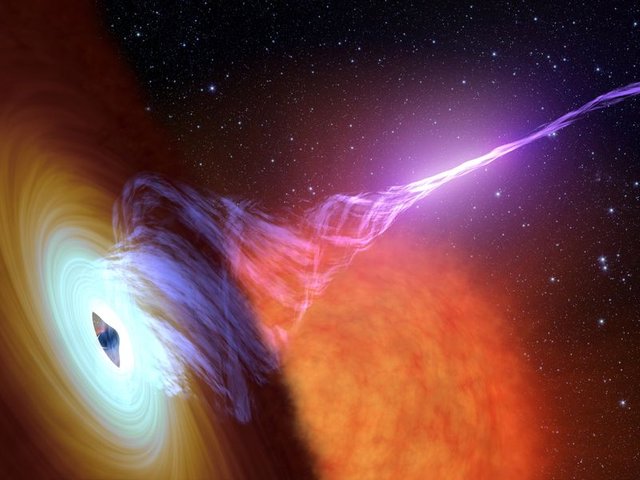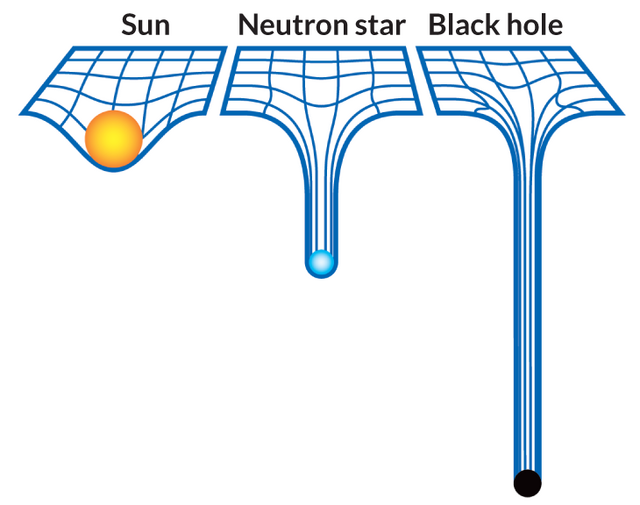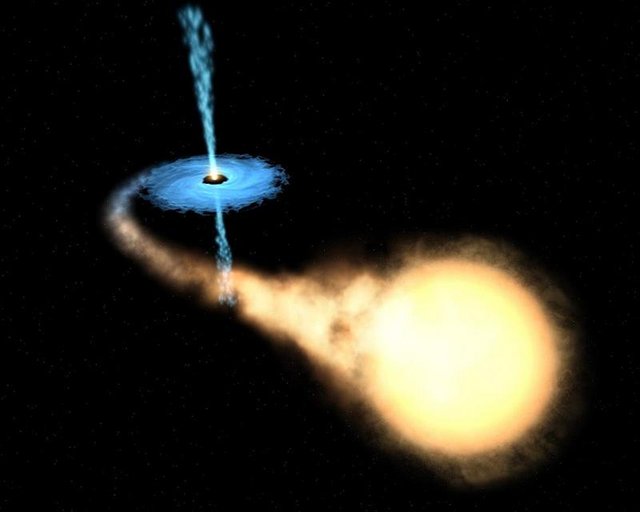The formation of the elements is an interesting question in astrophysics. For the discussion of this post, it is important to distinguish the few lightest elements from all the heavier ones.
Big bang nucleosynthesis explains how the lightest elements have been formed in the early days (actually seconds) of the universe.
After 10 seconds of its life, the universe was containing some protons, neutrons and electrons, as well as a lot of photons that were dominating its entire energy budget. Not a single element was present, except hydrogen as a hydrogen nucleus is a proton.

[image credits: JPL @ NASA ]
After these 10 seconds, the temperature was however still large enough so that the lightest of all elements (deuterium, tritium, helium-3 and helium-4, beryllium-7 and lithium-7) could be produced by successive neutron captures and nuclear fusion processes.
In practice, we start from hydrogen that captures one neutron to produce deuterium. Then a second neutron capture leads to helium-3. Proton, deuterium and helium-3 fusions finally allow to produce the other nuclei above-mentioned.
However, the absence of any element with 5 and 8 nucleons (a nucleon generically denotes a proton or a neutron) makes it impossible to produce anything outside the above list. In order to explain the formation of the heavier elements, stars are necessary.
By burning light elements in the dense environment of a star core, nuclear fusion allows to produce the heavier guys. Helium nuclei are first fused into carbon and oxygen, and elements up to iron and nickel are then produced successively, one step at a time.
Producing anything heavier is more complicated as we need to rely again on neutron capture. And for this, we need a neutron-enriched environment that is not realized in stars. Supernovae and neutron star fusions are the new key player.
Black holes and accretion disks
In order to understand how black holes work, it is good to start with the fact that the universe is flat (this stems from data) and general relativity.

[image credits: Mysid (CC BY-SA 3.0)]
The image on the right is a good analogy of what is going on. The universe, seen as a sheet of rubber, is a flat surface on large scales.
At the level of smaller scales, like the one of planets, stars or galaxies, the content of the universe deforms its structure and bends spacetime.
In our analogy, any massive body can be seen as a marble deforming our sheet of rubber. Not all marbles are however equal, some being denser and some being more compact. Their properties impact the way in which they deform spacetime, so that the magnitude of the deformation is proportional to the density of the body.

[image credits: Ksshd (CC BY-SA 4.0)]
This is illustrated on the figure on the left. The sun is much less dense than a neutron star, and the latter is itself less dense than a black hole. Black holes are so compact that the deformation is actually infinite.
This shows why black holes attract and eat everything. Roughly speaking, anything that gets too close to a black hole (past the so-called event horizon) has no other choice than following the spacetime deformation straight into the center of the black hole.

[image credits: NASA/ESA (public domain)]
For this reason, it is not uncommon that black holes are surrounded by a structure called an accretion disk.
When matter gets close to the black hole (due to gravity), it follows a trajectory that consists in an inwards spiral. Gravitational and friction forces makes the temperature raising, so that a huge part of the available energy is automatically converted into electromagnetic radiation.
Take-home message: heavy element formation in black hole accretion disks
We now have enough information to answer the question about the creation of heavy elements in black hole accretion disks.
When matter gets absorbed by a black hole, it turns out that the accretion disk is mainly made of hydrogen (and to a smaller extent of other light elements). Therefore, if the density and the temperate are large enough, the very same nuclear fusion processes that gave rise to the formation of the heavy elements in the early moments of the universe could occur.
In other words, all elements ranging up to nickel could be produced. For anything heavier than nickel, it is a different story. The accretion disk is not a neutron-enriched environment, so that it is extremely rare to get them produced. The conditions for triggering the necessary neutron captures are not realized.
However, black hole accretion disks generally do not reach the density required to get nuclear fusion processes started, despite their important temperature. Accretion is indeed a usually slow process, regardless of the black hole size (see here for a master thesis on the topic). And dense accretion disks correspond to extremely fast accretion.
There are way around to temporarily get the right conditions, but the amount of heavy element subsequently produced stays tiny (less 0.01 percent of the observed amount of heavy elements).
To conclude, whilst heavy element production in black hole accretion disks is technically possible, it is so rare that it barely contributes to the entire heavy element production process in the universe.
SteemSTEM
Make sure to follow SteemSTEM on steemstem.io, Steemit, Facebook, Twitter and Instagram to always be up-to-date on our latest news and ideas. Please also consider to support the project by delegating to @steemstem for a ROI of 65% of our curation rewards (quick delegation links: 50SP | 100SP | 500SP | 1000SP | 5000SP | 10000SP).
StemQ Notice: This post was originally submitted on StemQ.io, a Q&A application for STEM subjects powered by the Steem blockchain.
I think I watched a Vsauce episode once talking about these accretion disks and how they are so much brighter than the biggest suns. I think he also mentioned that if the vertical ray were to hit earth directly, we'd be rekt by radiation in like 10 seconds.
I'm a noob at space stuff though, does the vertical ray appear on all black holes or is it just when a bigger one eats up a smaller one and a "supernova" occurs? I'm guessing the accretion disks appear both when there's two black holes and when one is just a star?
Downvoting a post can decrease pending rewards and make it less visible. Common reasons:
Submit
First, those radiation jets are indeed created within accretion disks, so that it occurs for very dense objects like black holes, neutron stars or pulsars. We only need one of these objects and not a pair or a merging phenomenon.
A pair of back-to-back energetic jets is produced from the accretion disk and emitted along the symmetry axis of the emitter. We however don't know why and how. Whilst there are several explanations on the market, more research is needed to get the full picture.
Astrophysical jets have huge energies, but I doubt the energy is large enough to destroy the planet. it is huge at the particle physics level. I don't find any evidence of anything that could have any consequence at the human level, except their detection if we are lucky due to the atmospheric shower they induce. There are actually many experiments scouting the sky for that (and many cool and intriguing observations are already there).
Downvoting a post can decrease pending rewards and make it less visible. Common reasons:
Submit
That new telescope they were creating looked insane, I can't wait to see what we get out of that one.
I always wondered, if we're already able to create these now and have space rockets. Imagine how life on other planets could already be observing us, just from a rocket they've sent out which is sending back data but it just takes a really long time for it to get back to their planet the further the rocket with the telescope is. Is there a possibility that could happen, or are telescopes in space impossible due to something?
Considering how good certain satellites have become where they can see a text written on a piece of paper, if they're technology is a lot further ahead they could potentially see the same details from light years away, kinda creepy. Maybe they've already located us but can only watch for now.
Downvoting a post can decrease pending rewards and make it less visible. Common reasons:
Submit
I'll go with this one. :)
Yes, they are possible. Very expensive but we gather so much information with them, not even comparable to earth's observation.
You need to distinct different "types" of the light (depending on energy we use different methods to observe - gamma, X-ray, visible, infrared, radio). Atmosphere blocks most of the gamma and x-ray radiation and we have may X-ray telescopes already operating in space. Visible and radio things are pretty observable from earth too, but as you know we have Hubble Space Telescope and Kepler, and for radio we have less known Russian interferometry radio spektr-R telescope.
Revolutionary stuff that is awaiting a GO is James Webb Space Telescope, here is a video about it youtube link.
And images of all telescopes and the part of wavelength they observe - photo.
So, to cut it short - yes they are available, but they cost a lot. Luckily some people think that it is important enough to understand physics instead of spending money on guns. :)
Downvoting a post can decrease pending rewards and make it less visible. Common reasons:
Submit
Oh yeah, nice that's the telescope I was talking about in a comment earlier, it's gonna be interesting.
Downvoting a post can decrease pending rewards and make it less visible. Common reasons:
Submit
In terms of revolutionary mission, we may want to also quote the proposed eLISA mission. In terms of superlatives, it is not that bad :D
Downvoting a post can decrease pending rewards and make it less visible. Common reasons:
Submit
There are like two questions in one here. I will try to answer as much as I can (am not too sure to get it right).
There are missions and future projects in space. For instance, the future eLISA mission that may be built for hunting gravitational waves, or AMS that is run from the international space station.
Now to go back to the question, we have no idea how evolved other civilizations could be and if they are already observing us, but we are free to dream. On the other side, we (as humans) are building missions to find them. It is not clear if we will ever meet anyone, but those telescopes built for astrophysics will not be the right tools to find them. They are tuned to other very specific purposed.
Downvoting a post can decrease pending rewards and make it less visible. Common reasons:
Submit
Creepy indeed, and highly likely, especially considering how enormous space actually is, as well as the fact that some galaxies out there are billions of years older than ours. However I believe that a highly advanced civilization would probably avoid contacting us. For the very same reason I never try to explain quantum physics to my dog.
Downvoting a post can decrease pending rewards and make it less visible. Common reasons:
Submit
Who knows? We are allowed to dream (personally, I don't care much about being reached out by aliens :) ).
Downvoting a post can decrease pending rewards and make it less visible. Common reasons:
Submit
Thank you for a very understandable and to the point answer.
An interesting thought experiment would be to imagine all the nuclear reactions taking place inside the event horizon before atoms themselves get spaghettified to nothingness and beyond our understanding of physics.
Not that it makes any difference to our universe anyway. 😀
Downvoting a post can decrease pending rewards and make it less visible. Common reasons:
Submit
You are welcome!
I am not to sure you get the right density inside the event horizon too. Naively, I would say that the problem is time dilatation. If you don't get the right density at the beginning, you will only get it in an infinite amount of time.
Downvoting a post can decrease pending rewards and make it less visible. Common reasons:
Submit
Wouldn't density converge to infinity as the particle approaches the singularity?
Sounds like another question for StemQ! ;-)
Downvoting a post can decrease pending rewards and make it less visible. Common reasons:
Submit
Because this takes an infinite amount of time so that this never happens, no?
Downvoting a post can decrease pending rewards and make it less visible. Common reasons:
Submit
An infinite amount of time from which reference frame? 😉
Downvoting a post can decrease pending rewards and make it less visible. Common reasons:
Submit
aha! :D
Downvoting a post can decrease pending rewards and make it less visible. Common reasons:
Submit
Very interesting question.
SALUDOS DESDE VENEZUELA
SALUTATIONS DU VENEZUELA
Greetings from Venezuela
Downvoting a post can decrease pending rewards and make it less visible. Common reasons:
Submit
There's a logan paul joke in here somewhere.
Downvoting a post can decrease pending rewards and make it less visible. Common reasons:
Submit
Very interesting question.
SALUDOS DESDE VENEZUELA
SALUTATIONS DU VENEZUELA
Greetings from Venezuela
Downvoting a post can decrease pending rewards and make it less visible. Common reasons:
Submit
Thanks for passing by ;)
Downvoting a post can decrease pending rewards and make it less visible. Common reasons:
Submit
I have no idea. You probably need to educate me here. I just googled the name but I still have no idea about what this guy does in details.
Downvoting a post can decrease pending rewards and make it less visible. Common reasons:
Submit
The question asked is quiet big and it needs critical and scientific thinking to get the right answer however, the best answer we can ever get to this question is by asking the Creator in prayers. Great post.
Downvoting a post can decrease pending rewards and make it less visible. Common reasons:
Submit
Thanks for your message. Instead of praying, we can also look by ourselves, trying to understand how things work. It is not guaranteed we will find out, but this is what science is after all. And doing research brings some fun :)
Downvoting a post can decrease pending rewards and make it less visible. Common reasons:
Submit
This story was recommended by Steeve to its users and upvoted by one or more of them.
Check @steeveapp to learn more about Steeve, an AI-powered Steem interface.
Downvoting a post can decrease pending rewards and make it less visible. Common reasons:
Submit
That is cool! Thanks!
Downvoting a post can decrease pending rewards and make it less visible. Common reasons:
Submit
$rewarding 100% 13min
Downvoting a post can decrease pending rewards and make it less visible. Common reasons:
Submit
Thanks in 13 minutes then ^^
Downvoting a post can decrease pending rewards and make it less visible. Common reasons:
Submit
SALUDOS DESDE VENEZUELA
SALUTATIONS DU VENEZUELA
Greetings from Venezuela
Downvoting a post can decrease pending rewards and make it less visible. Common reasons:
Submit
Thanks man!
Downvoting a post can decrease pending rewards and make it less visible. Common reasons:
Submit
Hi @lemouth!
Your post was upvoted by Utopian.io in cooperation with @steemstem - supporting knowledge, innovation and technological advancement on the Steem Blockchain.
Contribute to Open Source with utopian.io
Learn how to contribute on our website and join the new open source economy.
Want to chat? Join the Utopian Community on Discord https://discord.gg/h52nFrV
Downvoting a post can decrease pending rewards and make it less visible. Common reasons:
Submit
Congratulations @lemouth! You have completed the following achievement on the Steem blockchain and have been rewarded with new badge(s) :
Click here to view your Board
If you no longer want to receive notifications, reply to this comment with the word
STOPDo not miss the last post from @steemitboard:
Downvoting a post can decrease pending rewards and make it less visible. Common reasons:
Submit